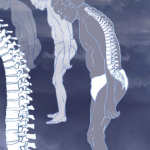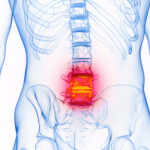Lucchino et al. recommend a three- to six-month period of observation before consideration of treatment with a conventional synthetic disease-modifying anti-rheumatic drug (DMARD) to avoid treating self-limiting disease.11 Sulfasalazine has been the most studied among these options and has been demonstrated to induce remission more rapidly than placebo. It can be used in chronic disease, but is only effective for peripheral, rather than axial disease.22
If sulfasalazine is contradicted due to G6PD deficiency or sulfonamide allergy, for example, or demonstrates a lack of efficacy, DMARDs, such as azathioprine or methotrexate, can be considered.
“When reactive arthritis becomes chronic,” says Dr. Miller, “its management begins to align closely with other spondyloarthropathies. Use DMARDs and/or biologic immunosuppression, guided by disease severity, axial and extra-articular manifestations.”
Biologic agents have been studied in small case series and case reports. Although there was initial concern regarding the possibility of bacterial proliferation in the setting of tumor necrosis factor (TNF) inhibition, available data suggest biologic efficacy without the risk of precipitating infection.11
Looking Ahead
Reactive arthritis, although rare, remains a significant diagnostic and therapeutic challenge due to its diverse presentation and unpredictable course.
Gaps in knowledge and areas for future study include the lack of diagnostic criteria and treatment guidelines, absence of biomarkers for disease activity and diagnosis, and limited data in long-term clinical trials, particularly related to biologic DMARDs.23 Additional areas of potential study include examining the role of the microbiome in disease pathogenesis and risk factors for progression to chronic spondyloarthritis.24,25
Expanding research efforts can help bridge gaps in knowledge and optimize care for this complex disease.
Michael Cammarata, MD, is an assistant professor of medicine at the Johns Hopkins School of Medicine, Baltimore.
References
- García-Kutzbach A, Chacón-Súchite J, García-Ferrer H, Iraheta I. Reactive arthritis: Update 2018. Clin Rheumatol. 2018 Apr;37(4):869–874.
- van Foreest P. (cited by Toivanen A; 2003) Reactive arthritis: Clinical features and treatment. In: Hochberg MC, Silman AJ, Smolen JS, Weinblatt ME, Weisman MH (eds). Rheumatology, Section 9, 3rd ed., vol 2. Spondyloarthropathies. Edinburgh: Mosby, pp. 1233–1240.
- Fiessinger N, Leroy E. Contribution à l’etude d’une epidemie de dysenterie dans la Somme. Bull Mem Soc Med Hop Paris. 1916 Juil–Oct;40:2030–2069.
- Keitel W. [Hans Reiter and the oculo-urethro-synovial syndrome. 3. The unknown Hans Reiter, scientist and national socialism propagandist.] [Article in German.] Z Rheumatol. 2004 Jun;63(3):244–249.
- Hannu T. Reactive arthritis. Best Pract Res Clin Rheumatol. 2011 Jun;25(3):347–357.
- Agarwal A, Maikap D, Padhan P. Treatment of reactive arthritis with biological agents. Curr Rheumatol Rep. 2024 Dec;26(12):450–458.
- Selmi C, Gershwin ME. Diagnosis and classification of reactive arthritis. Autoimmun Rev. 2014 Apr–May;13(4-5):546–549.
- Leirisalo-Repo M, Hannu T, Mattila L. Microbial factors in spondyloarthropathies: Insights from population studies. Curr Opin Rheumatol. 2003 Jul;15(4):408–412.
- Aho K, Ahvonen P, Lassus A, et al. HL-A antigen 27 and reactive arthritis. Lancet. 1973 Jul 21;2(7821):157.
- Leirisalo M, Skylv G, Kousa M, et al. Followup study on patients with Reiter’s disease and reactive arthritis, with special reference to HLA-B27. Arthritis Rheum. 1982 Mar;25(3):249–259.
- Lucchino B, Spinelli FR, Perricone C, et al. Reactive arthritis: Current treatment challenges and future perspectives. Clin Exp Rheumatol. 2019 Nov–Dec;37(6):1065–1076.
- Hannu T, Inman R, Granfors K, et al. Reactive arthritis or post-infectious arthritis? Best Pract Res Clin Rheumatol. 2006 Jun;20(3):419–433.
- Proft F, Poddubnyy D. Ankylosing spondylitis and axial spondyloarthritis: Recent insights and impact of new classification criteria. Ther Adv Musculoskelet Dis. 2018 Jun;10(5–6):129–139.
- Collantes E, Zarco P, Muñoz E, et al. Disease pattern of spondyloarthropathies in Spain: Description of the first national registry (REGISPONSER) extended report. Rheumatology (Oxford). 2007 Aug;46(8):1309–1315.
- Rudwaleit M, van der Heijde D, Landewé R, et al. The Assessment of Spondyloarthritis International Society classification criteria for peripheral spondyloarthritis and for spondyloarthritis in general. Ann Rheum Dis. 2011 Jan;70(1):25–31.
- Fendler C, Laitko S, Sörensen H, et al. Frequency of triggering bacteria in patients with reactive arthritis and undifferentiated oligoarthritis and the relative importance of the tests used for diagnosis. Ann Rheum Dis. 2001 Apr;60(4):337–343.
- Schmitt SK. Reactive Arthritis. Infect Dis Clin North Am. 2017 Jun;31(2):265–277.
- Quinzaños-Alonso I. “Reactive Arthritis” in Rheumatology Secrets (West S, Kolfenbach J, eds). Philadelphia: Elsevier, 2019 Dec 8.
- Thomson GT, DeRubeis DA, Hodge MA, et al. Post-Salmonella reactive arthritis: Late clinical sequelae in a point source cohort. Am J Med. 1995 Jan;98(1):13–21.
- Bardin T, Enel C, Cornelis F, et al. Antibiotic treatment of venereal disease and Reiter’s syndrome in a Greenland population. Arthritis Rheum. 1992 Feb;35(2):190–194.
- Hamdulay SS, Glynne SJ, Keat A. When is arthritis reactive? Postgrad Med J. 2006 Jul;82(969):446–453.
- Clegg DO, Reda DJ, Weisman MH, et al. Comparison of sulfasalazine and placebo in the treatment of reactive arthritis (Reiter’s syndrome). A Department of Veterans Affairs cooperative study. Arthritis Rheum. 1996 Dec;39(12):2021–2027.
- Mullokulov J. Reactive arthritis [unpublished manuscript]. 2024.
- Breban M, Tap J, Leboime A, et al. Faecal microbiota study reveals specific dysbiosis in spondyloarthritis. Ann Rheum Dis. 2017 Sep;76(9):1614–1622.
- Manasson J, Shen N, Garcia Ferrer HR, et al. Gut microbiota perturbations in reactive arthritis and postinfectious spondyloarthritis. Arthritis Rheumatol. 2018 Feb;70(2):242–254.
Acknowledgment
The author thanks Javohir Mullokulov MD, assistant professor, and Khalmurad Akhmedov, DSc, professor, both of Tashkent Medical Academy, Uzbekistan, for the idea that inspired this article and for their assistance in its development.


